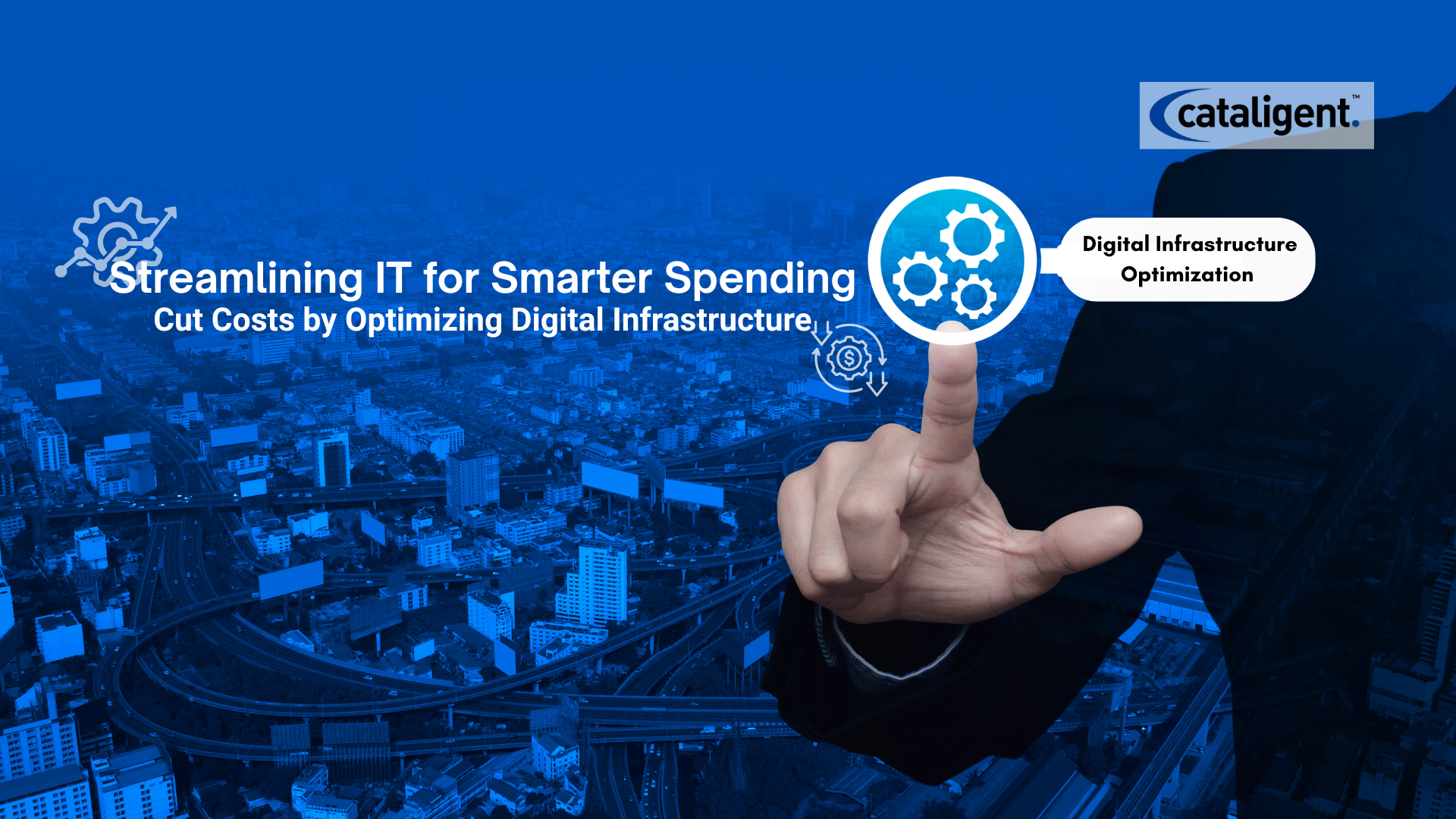Introduction:
In the modern business environment, IT infrastructure is a major cost center for organizations. Inefficient digital systems, underutilized resources, and outdated technology can drain budgets and reduce operational efficiency. Optimizing digital infrastructure is crucial for reducing IT expenditures while maintaining performance, scalability, and security. By adopting strategic cost-saving initiatives, businesses can achieve significant financial and operational benefits. Beyond immediate cost reduction, optimized digital infrastructure enables greater business agility and positions the organization for long-term growth.
What Is Digital Infrastructure Optimization?
Digital infrastructure optimization involves evaluating, restructuring, and enhancing an organization’s IT systems to maximize efficiency and minimize costs. It includes cloud adoption, server consolidation, software rationalization, process automation, and network optimization. The goal is to deliver robust, secure, and scalable technology solutions while reducing unnecessary expenditure and improving overall performance. Optimized infrastructure supports innovation, enhances service delivery, and ensures the organization remains competitive in a rapidly evolving digital landscape.
Why Optimizing Digital Infrastructure Is Essential:
- Reducing Operational Costs:
Inefficient IT systems consume excessive resources, including electricity, maintenance, and human effort. Optimizing infrastructure through cloud migration, virtualization, and rationalization reduces hardware and energy consumption and lowers ongoing maintenance expenses. Cost savings can then be redirected to strategic projects, innovation initiatives, or workforce development, making the organization leaner and more financially resilient. - Improving Resource Utilization:
Many organizations fail to fully utilize servers, storage, and software licenses, leading to wasted capacity and unnecessary expenditure. By optimizing digital infrastructure, businesses can ensure that all resources are deployed efficiently. For example, virtualization allows multiple workloads to share a single server, and software audits ensure licenses are fully used. Improved utilization maximizes return on existing investments and reduces the need for additional capital expenditure. - Enhancing Scalability and Flexibility:
Optimized IT infrastructure allows businesses to scale resources up or down based on demand, enabling rapid adaptation to market conditions. Cloud platforms, scalable storage solutions, and automated provisioning ensure that the organization can respond to growth or contraction efficiently. This flexibility reduces the cost of over-provisioning while supporting business agility and ensuring IT resources match operational needs. - Boosting Security and Compliance:
Outdated systems and poorly managed IT infrastructure increase the risk of security breaches and regulatory non-compliance, which can lead to costly fines and reputational damage. Optimization ensures systems are up-to-date, security patches are applied promptly, and compliance standards are maintained. Secure and compliant infrastructure mitigates risks, protects sensitive data, and builds trust with customers, partners, and regulators.
How to Implement Cost-Saving Digital Infrastructure Strategies:
- Cloud Migration:
Transition workloads to cloud platforms to reduce dependency on physical hardware. Cloud solutions provide pay-as-you-go pricing, which eliminates the need for large upfront investments and reduces ongoing maintenance costs. Migrating to the cloud also enables automated scaling, better disaster recovery, and improved collaboration capabilities, making IT more responsive to business needs. - Server Consolidation and Virtualization:
Consolidate underutilized servers and implement virtualization to optimize computing resources. Multiple virtual machines can run on a single physical server, reducing hardware costs, energy consumption, and management overhead. This approach not only cuts costs but also simplifies IT management and increases operational efficiency. - Software Rationalization:
Conduct a comprehensive review of software usage to identify redundant, underutilized, or outdated applications. Eliminating unnecessary licenses and standardizing software reduces licensing costs and administrative complexity. Rationalization ensures that employees have access to the tools they need while avoiding excess expenditure on software that offers little value. - Network and Storage Optimization:
Optimize network architecture, storage solutions, and data management practices to enhance efficiency. Implement strategies such as data deduplication, automated backups, and tiered storage to reduce costs. Efficient networks and storage systems improve data flow, reduce latency, and support business continuity, ultimately driving both performance and cost savings. - Automation and AI Integration:
Use automation and AI tools to handle repetitive IT tasks, including patch management, monitoring, and reporting. Automation reduces labor costs, minimizes human error, and speeds up routine processes. AI-driven predictive maintenance and system management enhance operational efficiency, allowing IT teams to focus on higher-value strategic initiatives. - Continuous Monitoring and Optimization:
Regularly track IT performance, resource utilization, and expenditure using dashboards and analytics. Continuous monitoring identifies inefficiencies, ensures proactive resource allocation, and supports ongoing cost-saving measures. This iterative approach allows organizations to maintain optimal performance, adapt to changing business needs, and continuously improve IT operations.
How Cataligent Can Help:
Cataligent assists organizations in optimizing their digital infrastructure to achieve cost efficiency and operational excellence:
- IT Assessment: evaluates existing IT systems, identifies inefficiencies, and develops a roadmap for cost-effective optimization.
- Cloud and Virtualization Strategy: designs tailored cloud adoption and server virtualization plans, ensuring scalability, security, and reduced costs.
- Software and Resource Optimization: streamlines software licenses, optimizes storage, and improves resource allocation to reduce unnecessary IT expenditure.
- Monitoring and Continuous Improvement: establishes monitoring tools, KPIs, and analytics dashboards to ensure continuous optimization, cost control, and performance enhancement.
Key Benefits of Optimizing Digital Infrastructure with Cataligent:
- Reduced IT Costs: Lower hardware, software, and operational expenditures through strategic optimization.
- Enhanced Resource Efficiency: Maximize utilization of servers, storage, and software licenses to achieve better ROI.
- Scalable and Flexible IT Systems: Quickly adjust IT resources to match business demand without overspending.
- Improved Security and Compliance: Maintain up-to-date, secure, and compliant systems to avoid risks and penalties.
Conclusion:
Optimizing digital infrastructure is a strategic imperative for modern businesses aiming to reduce IT costs, improve operational efficiency, and enhance scalability. Through cloud migration, server consolidation, software rationalization, network optimization, and automation, organizations can achieve substantial savings and improved performance. Cataligent’s expertise ensures digital infrastructure is optimized effectively, delivering measurable cost reductions, enhanced operational efficiency, and sustainable IT excellence.

